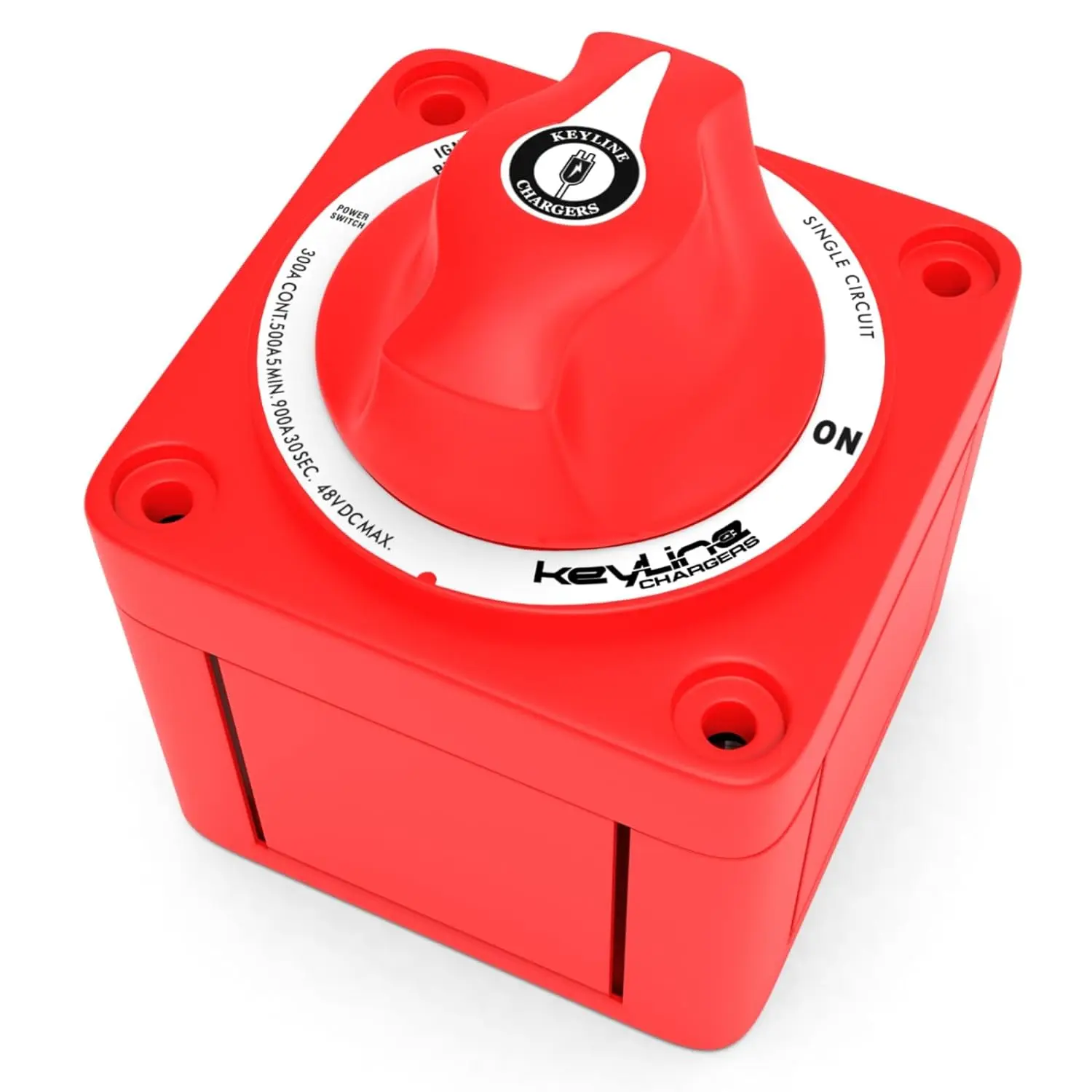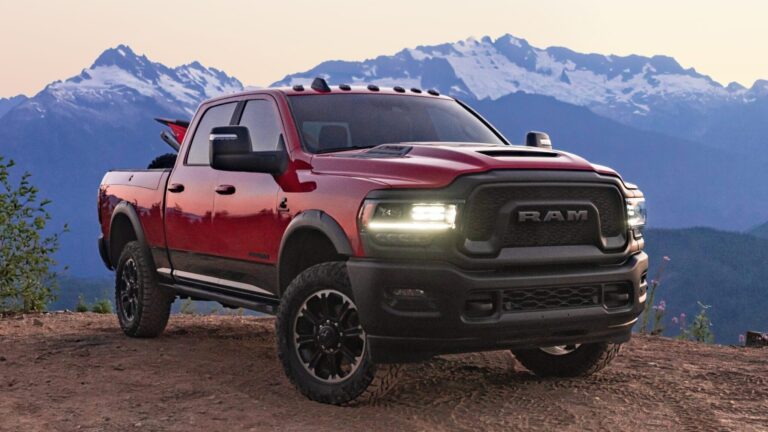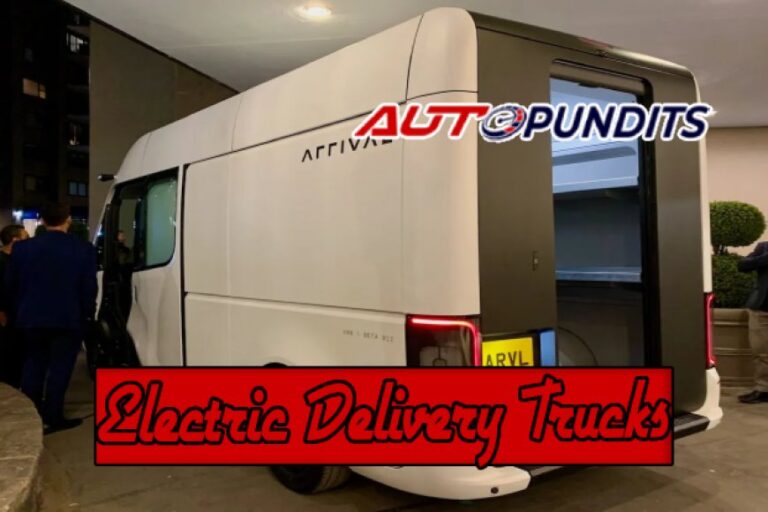Main Parts Of A Truck: Unveiling the Anatomy of a Workhorse
Main Parts Of A Truck: Unveiling the Anatomy of a Workhorse cars.truckstrend.com
From hauling immense loads across continents to navigating challenging off-road terrains, trucks are indispensable machines that power our economies and facilitate our daily lives. More than just a means of transport, a truck is a complex marvel of engineering, a symphony of interconnected systems working in harmony. Understanding the "main parts of a truck" isn’t just for mechanics; it empowers owners, operators, and enthusiasts to appreciate the sheer ingenuity involved and to make informed decisions regarding maintenance, repair, and even purchase.
This comprehensive guide will dissect the anatomy of a typical truck, exploring its fundamental components, their functions, and why each piece is critical to the vehicle’s overall performance, safety, and longevity.
Main Parts Of A Truck: Unveiling the Anatomy of a Workhorse
The Foundation: Chassis and Frame
At the very core of any truck lies its chassis and frame, the robust skeletal structure that provides the necessary rigidity and support for all other components. Often referred to as the "backbone" of the truck, the frame is typically constructed from heavy-duty steel rails, designed to withstand immense torsional and bending forces.
- Function: The frame supports the engine, transmission, axles, suspension, cab, and cargo body. It distributes the weight of the truck and its payload evenly, ensuring structural integrity and stability, especially under heavy loads or during high-speed maneuvers.
- Importance: A strong, well-maintained frame is paramount for safety and payload capacity. Any damage to the frame can compromise the entire vehicle’s structural integrity, leading to unsafe operating conditions and costly repairs.
- Considerations: Different truck types (e.g., light-duty pickups vs. heavy-duty semi-trucks) feature frames of varying thickness and design to accommodate their specific load requirements. Regular inspection for rust, cracks, or bends is crucial.
The Powerhouse: Engine and Powertrain

The engine is the heart of the truck, converting fuel into mechanical energy to propel the vehicle. Trucks often utilize powerful internal combustion engines, predominantly diesel for heavy-duty applications due to their superior torque, fuel efficiency under load, and durability. Gasoline engines are more common in lighter-duty trucks.
- Function: The engine generates power, which is then transferred through the powertrain to the wheels. The powertrain typically includes:
- Transmission: Manages the power output from the engine, allowing the driver to select different gear ratios for varying speeds and loads. Trucks can have manual, automatic, or automated manual transmissions.
- Driveshaft: A rotating shaft that transmits power from the transmission to the differential.
- Differential: Located in the axle, it allows the wheels on the same axle to rotate at different speeds, which is essential when turning.
- Axles: The shafts that connect the wheels and transfer power from the differential to the wheels. Trucks can have single, tandem, or multiple drive axles.
- Importance: A well-maintained engine and powertrain are vital for reliability, performance, and fuel economy. Any issues can lead to significant downtime and expensive repairs.
- Practical Advice: Regular oil changes, filter replacements (oil, fuel, air), and timely maintenance of the cooling system are crucial for engine longevity. For transmissions, fluid checks and changes according to manufacturer specifications prevent premature wear.

Stopping Power: The Braking System
Equally as important as the ability to move is the ability to stop safely and effectively. The braking system is a critical safety component, designed to slow down or halt the truck and its load.
- Function: Modern trucks primarily use hydraulic disc brakes on lighter vehicles and air brakes on heavy-duty trucks. Both systems work by creating friction against rotating components (rotors or drums) to convert kinetic energy into heat, thus slowing the vehicle.
- Air Brake System (Heavy-Duty): Utilizes compressed air to actuate brake chambers, which push brake shoes against drums or calipers against discs. It includes an air compressor, reservoirs, and various valves.
- Hydraulic Brake System (Light-Duty): Uses hydraulic fluid pressure to actuate calipers (disc brakes) or wheel cylinders (drum brakes).
- Importance: A robust and responsive braking system is non-negotiable for safety, especially considering the immense weight trucks carry. Brake failure can have catastrophic consequences.
- Considerations: Regular inspection of brake pads/linings, rotors/drums, air lines/hydraulic lines, and fluid levels (for hydraulic systems) is essential. Drivers should be aware of brake fade and proper braking techniques, especially on long descents.
Guiding the Way: The Steering System
The steering system allows the driver to control the direction of the truck. Most modern trucks use power steering systems, which significantly reduce the effort required to turn the large wheels.
- Function: The steering wheel connects to a steering column, which in turn engages a steering gear (e.g., rack and pinion or recirculating ball). This gear translates the rotational motion of the steering wheel into linear motion, which then manipulates the tie rods and steering arms, turning the wheels.
- Importance: A precise and responsive steering system is crucial for maneuverability, control, and safety, especially when navigating tight spaces or maintaining stability at high speeds.
- Tips: Pay attention to unusual noises, excessive play in the steering wheel, or difficulty in steering, as these can indicate issues with the power steering pump, fluid levels, or steering linkages. Regular alignment checks help ensure even tire wear and proper handling.
Comfort and Stability: The Suspension System
The suspension system connects the wheels to the truck’s frame, allowing for relative motion between them. It plays a dual role: providing a comfortable ride for the occupants and maintaining tire contact with the road for optimal traction and control.
- Function: Components typically include:
- Springs: Absorb vertical motion and support the vehicle’s weight (e.g., leaf springs, coil springs, air springs). Heavy-duty trucks often use multi-leaf springs or air suspension for their load-carrying capacity and ride comfort.
- Shock Absorbers/Dampers: Control the oscillation of the springs, preventing excessive bouncing and ensuring a smooth, stable ride.
- Control Arms/Linkages: Connect the wheel assembly to the frame, allowing movement while maintaining proper wheel alignment.
- Importance: A properly functioning suspension system is vital for ride quality, vehicle stability, tire life, and the safety of the cargo.
- Challenges: Worn suspension components can lead to poor handling, increased tire wear, and a harsh ride. Overloading a truck can severely strain the suspension, leading to damage.
The Nerve Center: Electrical System
The electrical system is the truck’s nervous system, powering everything from the engine’s ignition to the cab’s creature comforts and critical safety lights.
- Function: Key components include:
- Battery: Stores electrical energy for starting the engine and powering accessories when the engine is off. Trucks often have multiple batteries due to higher power demands.
- Alternator: Charges the battery and powers the electrical system when the engine is running.
- Wiring Harnesses: A complex network of wires transmitting power and signals throughout the truck.
- Electronic Control Units (ECUs): Often referred to as the "brain," these computers manage various engine functions, transmission shifts, braking systems (ABS), and more.
- Lighting System: Headlights, tail lights, turn signals, marker lights – crucial for visibility and safety.
- Importance: A reliable electrical system is fundamental for starting, operating, and safely navigating a truck. Modern trucks are heavily reliant on electronics for optimal performance and diagnostics.
- Actionable Insights: Keep battery terminals clean and tight. Check fuses when electrical components fail. Be mindful of aftermarket electrical accessories that could overload the system.
The Driver’s Command Center: The Cabin/Interior
While not a "mechanical" part in the traditional sense, the cabin or interior is where the driver interacts with all the truck’s systems and spends countless hours. Its design significantly impacts driver comfort, safety, and productivity.
- Function: Houses the steering wheel, instrument panel (gauges, warning lights), pedals (accelerator, brake, clutch), gear shifter, seats, HVAC (heating, ventilation, air conditioning) system, and infotainment. Modern cabins often include advanced driver-assistance systems (ADAS) like lane departure warning and collision mitigation.
- Importance: A well-designed, ergonomic, and comfortable cabin reduces driver fatigue, enhances safety, and improves overall operational efficiency.
- Tips: Maintain a clean and organized cabin. Ensure all gauges and warning lights are functioning correctly. Ergonomic adjustments of seats and steering wheel can significantly improve long-haul comfort.
The Payload Carrier: Cargo Area/Body
The final major component, and one that defines the truck’s specific utility, is the cargo area or body. This varies wildly depending on the truck’s purpose.
- Function:
- Pickup Trucks: Open bed for versatile hauling.
- Semi-Trucks (Tractor Units): Fifth wheel coupling to attach various types of trailers (flatbeds, dry vans, reefers, tankers).
- Dump Trucks: Hydraulic bed for transporting and unloading loose materials.
- Box Trucks: Enclosed cargo area for secure transport.
- Specialty Trucks: Cranes, refuse compactors, fire engines, etc., each with highly specialized bodies.
- Importance: The cargo area is purpose-built to safely and efficiently transport specific types of goods or perform specialized tasks. Its capacity and structural integrity directly impact the truck’s revenue-generating potential.
- Considerations: Adhering to weight limits (GVWR, GAWR) is critical for safety and avoiding fines. Proper load securement is essential to prevent shifting cargo and accidents. Regular inspection of the body for damage, rust, and functionality of any moving parts (e.g., hydraulics on a dump truck) is vital.
Practical Advice for Truck Owners and Operators
Understanding these main parts is the first step. Here’s some actionable advice:
- Follow Maintenance Schedules: Adhere strictly to the manufacturer’s recommended service intervals for fluid changes, filter replacements, and inspections.
- Perform Pre-Trip Inspections: Regularly check tires, lights, brakes, fluid levels, and visible components before each trip. This can catch minor issues before they become major problems.
- Listen to Your Truck: Pay attention to unusual noises, vibrations, smells, or warning lights. These are often early indicators of a problem.
- Invest in Quality Parts: While cheaper alternatives exist, investing in high-quality, reputable replacement parts often pays off in terms of durability and performance.
- Seek Professional Help: For complex diagnostics or repairs, always consult certified mechanics who specialize in trucks.
Estimated Price Table for Major Truck Parts
Please note: Prices for truck parts vary significantly based on the truck’s make, model, year, engine type, part brand (OEM vs. aftermarket), condition (new, remanufactured, used), and regional market. The figures below are estimates for common components and are provided for general informational purposes only.
| Main Part | Description | Estimated Price Range (USD) – New | Notes |
|---|---|---|---|
| Engine (Complete) | Diesel/Gasoline, long block or complete drop-in | $8,000 – $40,000+ | Varies by size, type, and manufacturer. Remanufactured options are cheaper. |
| Transmission | Automatic or Manual (e.g., 6-speed, 10-speed) | $3,000 – $15,000+ | Complexity and heavy-duty nature impact price. Remanufactured available. |
| Set of Tires (6-18) | Commercial-grade, depending on truck type (e.g., semi-truck needs 10+) | $1,500 – $8,000+ | Varies by size, type (all-season, highway, off-road), and brand. |
| Brake System Overhaul | Pads/Linings, Rotors/Drums, Calipers/Chambers (per axle) | $500 – $2,500+ (per axle) | Components and labor for major brake service. Air brake components can be pricey. |
| Alternator | Charges battery, powers electrical system | $200 – $800+ | High-output alternators for heavy-duty trucks are more expensive. |
| Starter Motor | Engages flywheel to crank engine | $150 – $600+ | Essential for starting. |
| Radiator | Part of cooling system, dissipates heat from engine coolant | $300 – $1,500+ | Size and material (aluminum/copper) impact cost. |
| Suspension Components | Leaf springs (per set), Airbags (each), Shock Absorbers (each) | $200 – $1,000+ (per component) | Varies widely by truck type and specific part. |
| Battery (Commercial) | High-CCA (Cold Cranking Amps) for trucks (often 2-4 needed) | $100 – $300 (each) | Number of batteries required increases cost. |
| Driveshaft | Transmits power from transmission to differential | $400 – $1,500+ | Length and complexity vary. |
Frequently Asked Questions (FAQ)
Q1: How often should I perform maintenance on my truck?
A1: Follow the manufacturer’s recommended maintenance schedule outlined in your truck’s owner’s manual. This typically includes regular oil changes, filter replacements, fluid checks, and comprehensive inspections at specified mileage intervals. Heavy-duty trucks often have more frequent service requirements.
Q2: What’s the difference between an OEM part and an aftermarket part?
A2: OEM (Original Equipment Manufacturer) parts are made by the same company that supplied the parts to the truck manufacturer. Aftermarket parts are produced by other companies. OEM parts generally guarantee fit and quality but can be more expensive. Aftermarket parts offer more variety and often lower prices, but quality can vary.
Q3: How can I improve my truck’s fuel efficiency?
A3: Regular maintenance (engine tune-ups, tire pressure checks), proper driving habits (avoiding rapid acceleration/braking, maintaining consistent speeds), reducing idling, ensuring proper tire alignment, and minimizing unnecessary weight can all improve fuel efficiency.
Q4: What are the most common causes of truck breakdowns?
A4: Common causes include tire issues (flats, blowouts), electrical problems (battery, alternator), cooling system failures (overheating), brake problems, and engine-related issues due to lack of maintenance. Many breakdowns can be prevented with diligent pre-trip inspections and adherence to maintenance schedules.
Q5: Is it safe to buy used truck parts?
A5: Buying used parts can be cost-effective, especially for non-critical components. However, for crucial parts like engine components, transmission, or brakes, remanufactured or new parts are generally safer and come with warranties. Always purchase used parts from reputable suppliers and inspect them thoroughly.
Conclusion
A truck is much more than just a vehicle; it’s a meticulously engineered system designed for immense capability and endurance. From the robust frame that forms its skeleton to the powerful engine that drives its purpose, and the intricate systems that ensure its safe operation, each main part plays an indispensable role. A thorough understanding of these components not only fosters a deeper appreciation for these mechanical titans but also empowers owners and operators to ensure their longevity, reliability, and safe performance on the road. By investing in regular maintenance, performing diligent inspections, and understanding the vital functions of each part, you can maximize the potential of your workhorse and keep it delivering for years to come.




